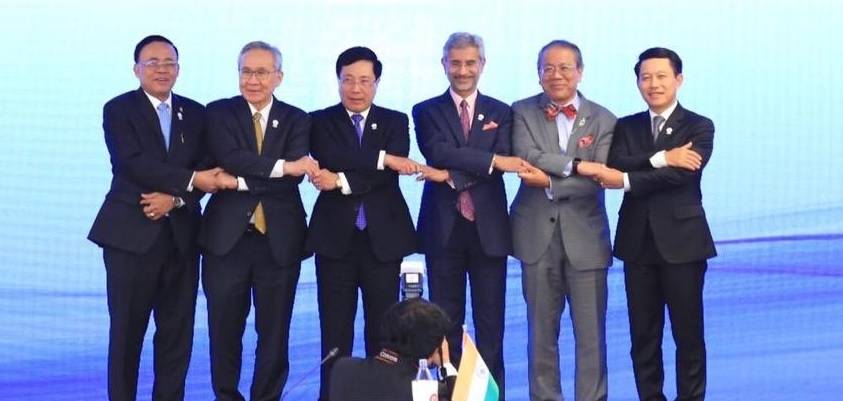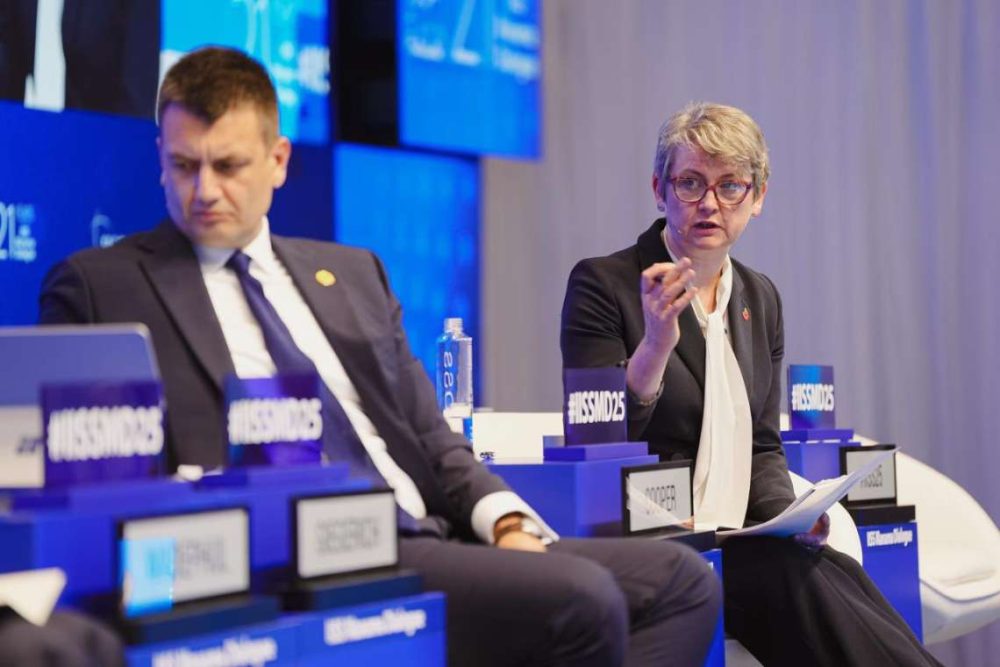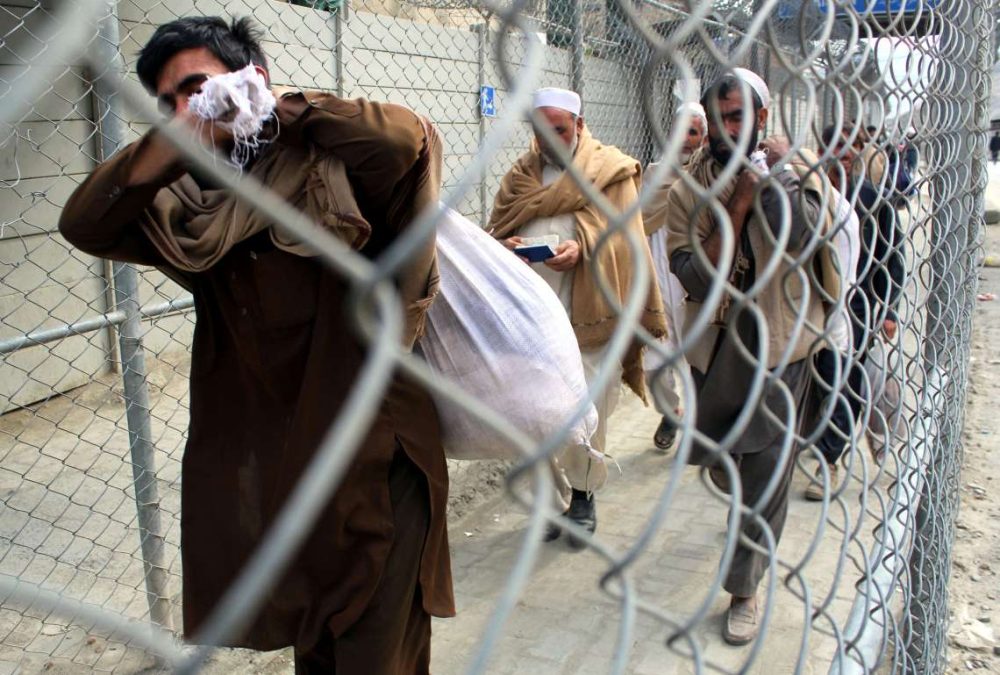India has also provided more than 2 billion USD in loans for projects in water resources development, connectivity, infrastructure construction, digitalisation, and rural electrification, irrigation and education in the Mekong countries…reports Ateet Sharma.
India, even as it continues to increase financial support for Quick Impact Projects (QIPs) in the Mekong countries, has once again highlighted that connectivity remains instrumental in achieving sustainable growth and development of the entire sub-region.
Co-chairing the 11th Mekong Ganga Cooperation (MGC) Ministerial Meeting along with Cambodian Deputy Prime Minister and Minister of Foreign Affairs and International Cooperation Prak Sokhonn on Wednesday, External Affairs Minister S Jaishankar said that the Mekong region remains of great importance to New Delhi as it seeks multi-dimensional engagement with the Mekong countries.
“We need to broaden the base of our partnership by identifying newer areas of cooperation. We aim to promote connectivity in the region in the broadest sense of the term including not just physical but also digital, economic, and people-to-people connectivity,” said Jaishankar.

Established in the year 2000, the Mekong Ganga Cooperation, an initiative by six countries — India and five ASEAN countries, namely, Cambodia, Laos, Myanmar, Thailand and Vietnam for cooperation in tourism, culture, education, as well as transport and communications, remains one of the oldest sub-regional cooperation organisation.
With both the Ganga and the Mekong – which flows from its source on the Tibetan Plateau in China through various Southeast Asian countries – being civilizational rivers, the MGC initiative aims to facilitate closer contacts among the people inhabiting these two major river basins.
While the Upper Mekong River Basin comprises the Tibetan Plateau, the Three Rivers Area and Lancang Basin in China and Myanmar, the Lower one is made up of the Northern Highlands, the Khorat Plateau, the Tonle Sap Basin and the Mekong Delta. It covers Thailand, Laos, Cambodia and Vietnam.
India has funded, completed and continues to finance several MGC Quick Impact Projects in Cambodia, Vietnam, Laos and also implemented several community development projects under the Rakhine State Development Programme (RSDP) and Border Area Development Programme in Myanmar.
“The Mekong Ganga Cooperation stands on a strong foundation of shared geographical, historical and civilizational ties between our six countries. This oldest sub-regional cooperation is as much a celebration of our long and rich history of trade, cultural and people-to-people exchanges as it is a vehicle to advance modern day cooperation to bring progress and prosperity to our people,” said Jaishankar on Wednesday.
His counterpart, Cambodia’s Sokhonn lauded India’s assistance to the Mekong countries by financing the QIPs which has seen 38 projects being completed since 2015 and another 30 under implementation, bringing about tangible results that contribute to improving people’s livelihoods across the sub-region.
India has also provided more than 2 billion USD in loans for projects in water resources development, connectivity, infrastructure construction, digitalisation, and rural electrification, irrigation and education in the Mekong countries.
Pushing for an early completion of the India-Myanmar-Thailand Trilateral Highway and its extension to Cambodia, Laos and Vietnam which can become a vibrant economic growth corridor, India is already looking at its northeast as the gateway to south and southeast Asia.
The Narendra Modi government has launched dozens of projects to boost connectivity in the region, all part of the Act East policy of the government wherein special emphasis is not only being laid on the overall development of the border areas but also at India’s growing partnership with the East Asian countries and beyond.
With the two-way trade turnover between India and Mekong countries having increased 25 times, reaching 25 billion USD in 2020, the connectivity and regional integration between South and South-East Asian countries through several other forums like the the Bay of Bengal Initiative for Multi-Sectoral Technical and Economic Cooperation (BIMSTEC) also remains at the heart of India’s Act East policy.

US builds partnership with the Mekong sub-region, China talks of ‘shared future’
India’s increasing cooperation with the MGC partners to contribute to the development of the Mekong River Delta comes at a time when the United States is also making several efforts to curb the growing influence of China in the region which has become a hotbed of diplomatic activity over the past few years.
On June 29, the US co-hosted with Cambodia the first annual Mekong-US Partnership Senior Officials’ Meeting with the ASEAN Secretariat joining it as an observer. The Mekong-US Partnership includes the United States, Cambodia, Laos, Myanmar, Thailand and Vietnam. Highlighting the importance of ASEAN centrality to the US vision for a free and open Indo-Pacific, Washington emphasized that it is committed to a secure, prosperous, and open Mekong sub-region, which is vital to the health of ASEAN and its people.

The meeting took place after Laos Foreign Minister Saleumxay Kommasith, Cambodia’s Prak Sokhonn, Thai Deputy Prime Minister and Foreign Minister Don Pramudwinai and Vietnamese Foreign Minister Bui Thanh Son had also attended the sixth Lancang-Mekong Cooperation (LMC) Foreign Ministers’ Meeting held in Chongqing earlier in the month (June 8).
The LMC meeting was jointly chaired by Chinese State Councilor and Foreign Minister Wang Yi and Myanmar’s Foreign Minister U Wunna Maung Lwin.
Terming it as one of the most dynamic emerging cooperation mechanisms at the sub-region level, Wang Yi said that China will work with other five countries to adhere to the Lancang-Mekong spirit of “Shared River, Shared Future”, deepen good-neighbourliness and pragmatic cooperation, build a Lancang-Mekong Economic Development Belt, and continuously build an LMC community with a shared future.
This even as the Joe Biden administration, immediately after coming into power earlier this year, had urged Beijing not to impede the flow of Mekong river waters to southeast Asian countries downstream by constructing several dams.
The Mekong River Commission (MRC) – an intergovernmental organisation for regional dialogue and cooperation in the lower Mekong river basin based on the Mekong Agreement between the four Lower Mekong countries – has reported on several occasions that the water level along the river has fallen to “worrying” levels.
While the US, countries of the Mekong region and the MRC have been persisting with Beijing to provide more water data, the Chinese Communist Party regime has been accused frequently of not sharing year-round, real-time flow and dam operations’ data.
With several other nations – including Japan, South Korea, Australia – also working closely to help people of the Mekong countries, the region is expected to remain a theatre of action for the times to come.
(The content is being carried under an arrangement with indianarrative.com)
ALSO READ-India accords importance to Mekong region: Jaishankar
READ MORE-Chinese dams on River Mekong affects livelihoods of millions







